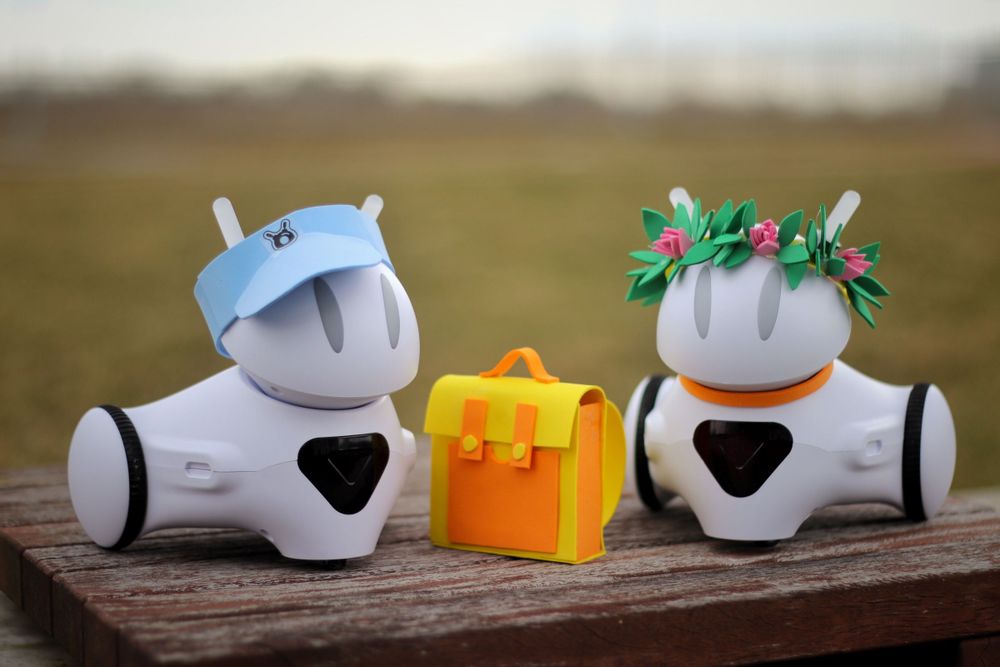Back to scenarios
Grades 6-8
6
Author:
Katka Połom
An algorithm of a friendship: Ada, Charles and the first computer program…
programming • creative activities
Duration time:
90 min.
Robots:
x2
Accessories:
Programming interface:
Scratch 2.0 (Photon Magic Bridge)Scratch 3.0 (Photon Magic Bridge)

Back to scenarios

Class goal:
Objectives:
- learn about Ada Lovelace and her friend Charles Babbage and the influence of their scientific achievements on the development of computer science and mathematics
- learn the meaning of terms: the difference engine, the analytical engine, an algorithm, a steam engine
- test their creativity when preparing a storyline
- learn how to do Internet research
- learn how to program Photon robots using the Photon Magic Bridge application and the Scratch 2.0 or 3.0 programming interface
Teaching methods:
- research
- brainstorming
Type of exercise:
- group
- individual
Required items:
- Laptops: 1 for each group (if you use PCs, you need a working microphone and speakers)
- Photon Magic Dongle (1 for each group)
- Smartphones, tablets or additional computers for Internet research
- Attachments: an exercise sheet Ada and Charles – short bios
Attachments:
Attachment no. 1: Ada and Charles- biographies
Download
Lesson scenario:
Introduction
Did you know that the first computer program was written by a woman in the 19th century – almost 200 years ago? And why do we know so little about this? In the times when Lady Lovelace lived, women did not have the privilege of access to higher education and men guarded access to the world of science, and still, even today, this great achievement of this remarkable woman is being questioned.
Meet Ada King, Countess of Lovelace and her scientist friend, Charles Babbage...
Sample scenario:
- Hand out to students printed biographies. Please read them aloud at the beginning of the class and provide some additional information that you seem relevant.
- Divide the students into groups, depending on the number of robots available. Each group should have at least two robots. If you have only two robots and the group is large, students can create stories and programs in smaller groups without robots. Later on, they would pass each other the next available robot for testing their programs.
- The first task for each group:
- read and understand the provided bios; find out more about these people on the Internet (have a look at YouTube, where you can find some interesting short videos), check the meaning of terms: The Difference Engine, The Analytical Engine, an algorithm. (Please specify a time for this task then explain the above terms for all students before moving on to the next part of the class.)
- Each group must come up with their own version of a meeting and conversation of Ada and Charles, who have just met at a ball – an event where Ada admires The Difference Engine built by Charles. The students are free to make up any scenarios of such a conversation, discussed topics but bearing in mind that it was a starting point in the history of a great friendship between these two people.
- The main task for each group is to program two Photon robots to play as Ada and Charles in students’ invented stories. Ask students to use Scratch 3.0 or 2.0 interfaces for programming. Ask them to make use of such features as sound recording and editing, built-in sensors, instruction blocks, e.g. for robot movement, changing the color of ears and eyes etc. Ask students to create a single program containing sub-programs for both robot-actors taking part in the show.
NOTE: In your introduction, please mention that the robot’s built-in sensors allow students to create programs based on interactions between the two robots (e.g. robots could start “dancing” once they “hear” music being played).
- Once all meeting scenarios and programs are ready, ask all groups to present their stories in turns.
Attention:
- Remember to provide speakers if you are not using laptops.
- Additional reading for the curious ones: Ada’s Algorithm by James Essinger
Interesting facts / Questions time
- Ada Lovelace’s portrait was the official watermark on Microsoft’s certificate of authenticity for their products.
- In honor of Lady Lovelace, the US Department of Defense named their programming language after her. The development of this language started in the mid-1970s. The first standardized version was named Ada83. The current version is Ada2012.
- Ada Lovelace Day (ALD) is celebrated every year on the second Tuesday of October, a day founded in 2009 by a British programmer and activist Suw Charman-Anderson, to celebrate the achievements of women in STEM (Science, Technology, Engineering, Mathematics).
In 2020 this day falls on the 13th of October.
Added: 20-01-2021, by: Katka Połom, Last update: 30-03-2021
Discussion (No comments)
Log in to start a discussion